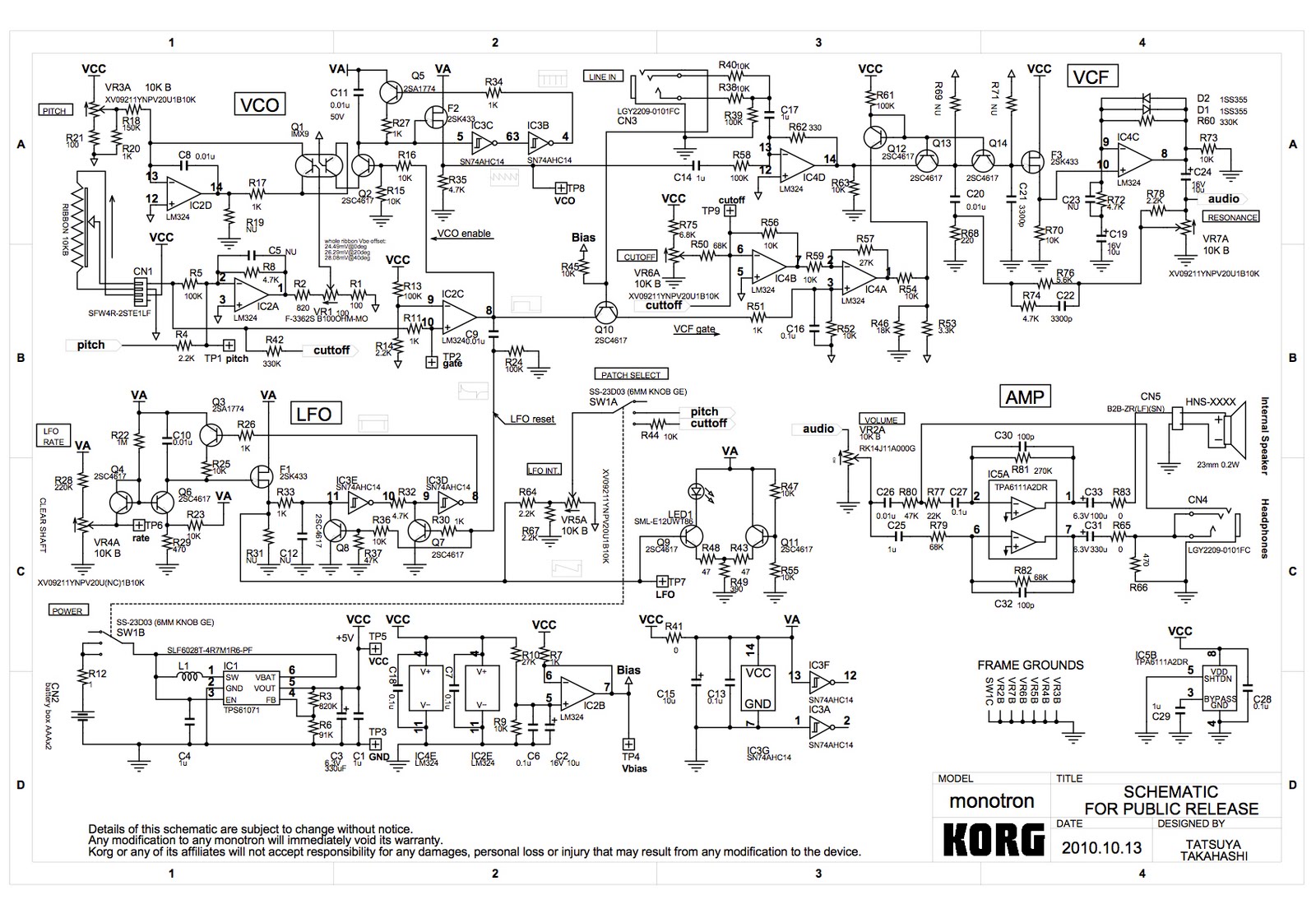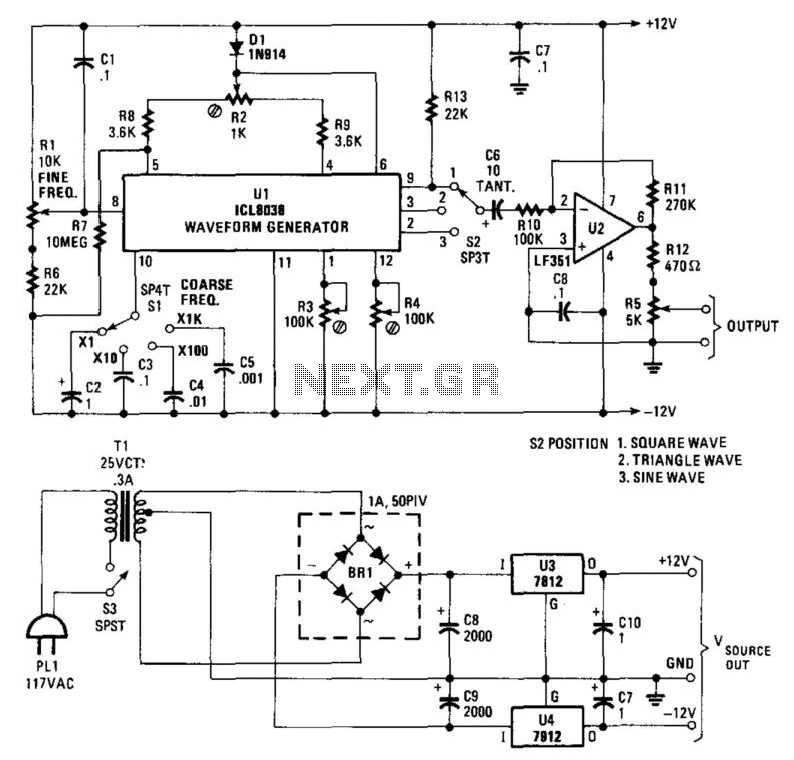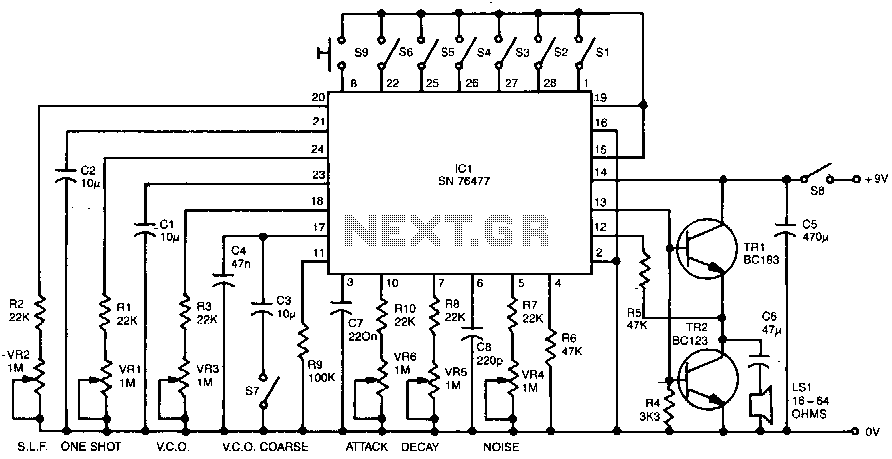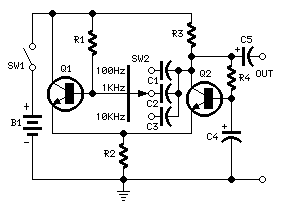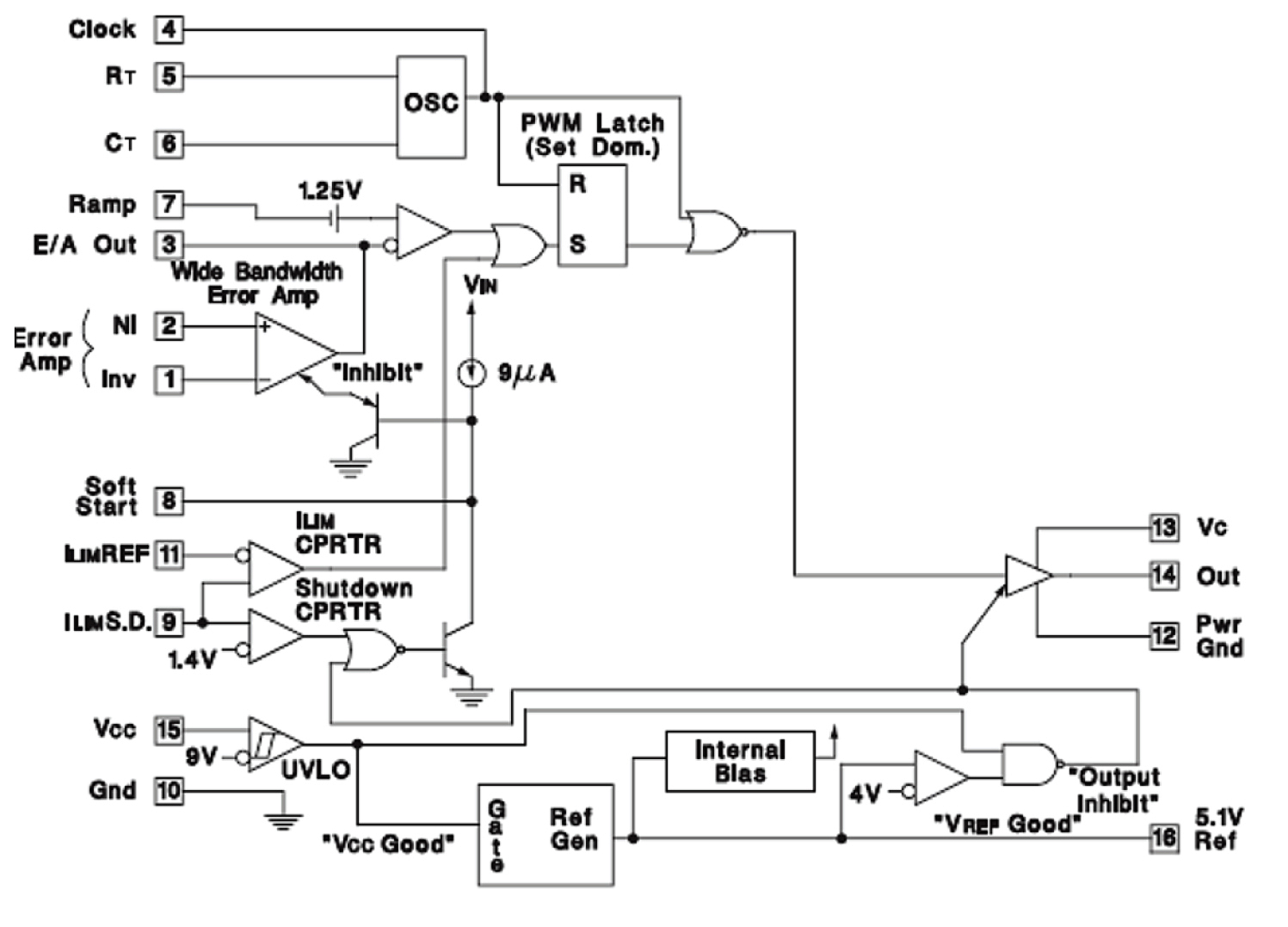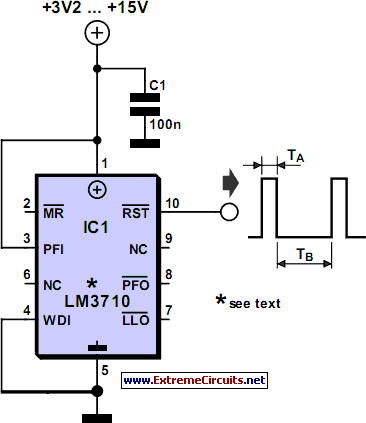
Ramp generator
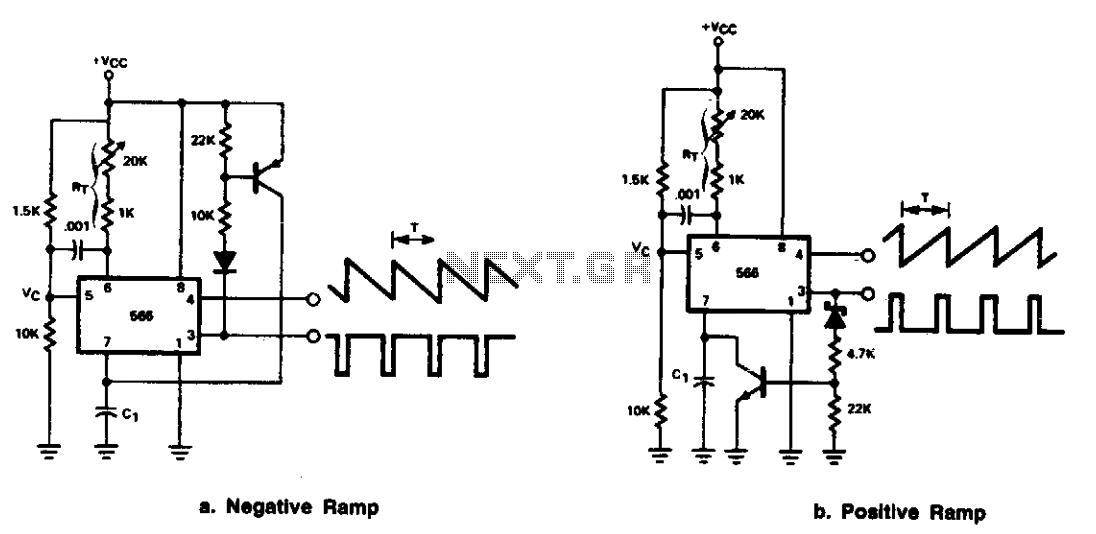
The 566 can be configured as either a positive or negative ramp generator. In the positive ramp generator configuration, the external transistor controlled by the output at Pin 3 quickly discharges capacitor C1 at the conclusion of the charging period, allowing for immediate resumption of charging. Similarly, the pnp transistor in the negative ramp generator configuration swiftly charges the timing capacitor C1 at the end of the discharge period. The rapid resetting of these circuits contributes to exceptional temperature stability in the ramp generator. The period is defined where f0 represents the free-running frequency of the 566 during normal operation. Additionally, Vc denotes the bias voltage at Pin 5, while RT is the total resistance between Pin 6 and Vcc. It is important to note that a brief pulse is available at Pin 3; incorporating collector resistance in series with the external transistor collector can extend the duration of this pulse.
The 566 integrated circuit (IC) serves as a versatile ramp generator, capable of producing linear voltage ramps in both positive and negative directions. The positive ramp generator configuration utilizes an external transistor connected to Pin 3, which acts as a discharge switch for capacitor C1. When the voltage across C1 reaches a predetermined threshold, the transistor rapidly discharges C1, enabling the charging cycle to initiate again without delay. This rapid discharge mechanism is crucial for maintaining the frequency stability of the output waveform.
In the negative ramp generator configuration, the process is reversed. The pnp transistor is employed to charge the timing capacitor C1 swiftly at the end of the discharge cycle, ensuring that the ramp generation process is efficient and responsive. This design allows for precise control over the ramp characteristics and ensures minimal drift over temperature variations, thereby enhancing the reliability of the circuit in various applications.
The operational frequency of the 566 ramp generator is determined by the external components connected to it. The free-running frequency f0 is influenced by the bias voltage Vc at Pin 5 and the total resistance RT between Pin 6 and the positive supply voltage Vcc. By adjusting these parameters, the user can tailor the frequency and duty cycle of the output waveform to meet the specific requirements of the application.
Moreover, the availability of a short pulse at Pin 3 provides additional functionality. This pulse can be utilized in timing applications or as a trigger signal for other circuits. To modify the characteristics of this pulse, a collector resistance can be added in series with the external transistor collector, which will extend the pulse duration, allowing for more versatile applications in timing and control systems. The design of the 566 ramp generator, therefore, offers significant flexibility and precision, making it suitable for a wide range of electronic applications.The 566 can be wired as a positive or negative ramp generator. In the positive ramp generator, the external transistor driven by the Pin 3 output rapidly discharges Cl at the end of the charging period so that charging can resume instantaneously. The pnp transistor of the negative ramp generator likewise rapidly charges the timing capacitor Cl at the end of the discharge period.
Because the circuits are reset so quickly, the temperature stability of the ramp generator is excellent. The period where f0 is the 566 free-running frequency in normal operation. Therefore, where Vc is the bias voltage at Pin 5 and RT is the total resistance between Pin 6 and Vcc. Note that a short pulse is available at Pin 3. (Placing collector resistance in series with the external transistor collector will lengthen the pulse.)
The 566 integrated circuit (IC) serves as a versatile ramp generator, capable of producing linear voltage ramps in both positive and negative directions. The positive ramp generator configuration utilizes an external transistor connected to Pin 3, which acts as a discharge switch for capacitor C1. When the voltage across C1 reaches a predetermined threshold, the transistor rapidly discharges C1, enabling the charging cycle to initiate again without delay. This rapid discharge mechanism is crucial for maintaining the frequency stability of the output waveform.
In the negative ramp generator configuration, the process is reversed. The pnp transistor is employed to charge the timing capacitor C1 swiftly at the end of the discharge cycle, ensuring that the ramp generation process is efficient and responsive. This design allows for precise control over the ramp characteristics and ensures minimal drift over temperature variations, thereby enhancing the reliability of the circuit in various applications.
The operational frequency of the 566 ramp generator is determined by the external components connected to it. The free-running frequency f0 is influenced by the bias voltage Vc at Pin 5 and the total resistance RT between Pin 6 and the positive supply voltage Vcc. By adjusting these parameters, the user can tailor the frequency and duty cycle of the output waveform to meet the specific requirements of the application.
Moreover, the availability of a short pulse at Pin 3 provides additional functionality. This pulse can be utilized in timing applications or as a trigger signal for other circuits. To modify the characteristics of this pulse, a collector resistance can be added in series with the external transistor collector, which will extend the pulse duration, allowing for more versatile applications in timing and control systems. The design of the 566 ramp generator, therefore, offers significant flexibility and precision, making it suitable for a wide range of electronic applications.The 566 can be wired as a positive or negative ramp generator. In the positive ramp generator, the external transistor driven by the Pin 3 output rapidly discharges Cl at the end of the charging period so that charging can resume instantaneously. The pnp transistor of the negative ramp generator likewise rapidly charges the timing capacitor Cl at the end of the discharge period.
Because the circuits are reset so quickly, the temperature stability of the ramp generator is excellent. The period where f0 is the 566 free-running frequency in normal operation. Therefore, where Vc is the bias voltage at Pin 5 and RT is the total resistance between Pin 6 and Vcc. Note that a short pulse is available at Pin 3. (Placing collector resistance in series with the external transistor collector will lengthen the pulse.)
